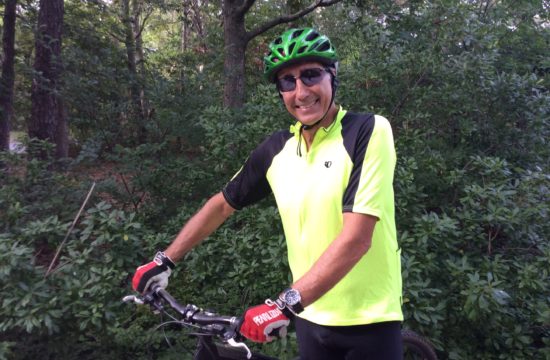Note from Dr. Galland
People often ask me how I came to reject the narrow confines of conventional medical practice. The answer is easy: its limited effectiveness, especially in treating people with chronic illness. I was educated and trained at New York University-Bellevue Medical Center and rapidly became disillusioned with the mythology of modern medicine. We were taught that the physician’s chief concern is the diagnosis and treatment of disease. I rapidly realized that patients heal themselves. Because conventional medicine ignores the healing process, it often leads doctors to use treatments that undermine healing instead of supporting it.
Conventional Western medicine is organized around the Theory of Diseases, which believes that a person becomes sick because he or she contracts a disease. In this model, each disease is seen as an independent entity which can be fully understood without regard to the person it afflicts or the environment in which it occurs. Conventional treatments are treatments of diseases, not of people. Most of the drugs employed in conventional medicine are designed to act as chemical straitjackets, preventing the cells of the body from performing some function that has become hyperactive. The side effects of these drugs are a direct extension of their actions and may be fatal. A Harvard research team concluded that 120,000 Americans are killed in hospitals by their doctors every year. Most of these deaths occur because doctors prescribe drugs without paying attention to the special characteristics of the person for whom the drugs are prescribed.
Two decades ago, I left a full-time academic career to establish a general practice in a small town in Connecticut. There I developed a habit which taught me more about patients than did eight years of schooling and residency training and five years of teaching. I began phoning patients whom I hadn’t seen for several months, to inquire about how they were feeling and what they were doing to take care of themselves. I was constantly impressed by the huge extent of individual differences in response to the same kind of treatment. I also realized that most of the accepted therapies for chronic ailments did little to improve the quality of a patient’s life or health.
Frustrated by the obvious limitations of conventional therapeutics, I explored alternative strategies, beginning with the study of nutrition, psychology, environmental health and therapeutic exercise. I was amazed to discover that so much of medical relevance within these disciplines was already known and published, yet so little had been incorporated into the practice of medicine. My effort to integrate these fields into health care led me back into training and research and eventually into a unique specialty that is patient-oriented, not disease-oriented. For the past fifteen years I have worked intensively with people who pose diagnostic dilemmas or are considered to be treatment failures. Most have seen numerous medical specialists and many have consulted a variety of alternative health practitioners. In attempting to help these patients, I moved beyond conventional notions of diagnosis and treatment to explore aspects of the patient’s lives which had previously been ignored: dietary, environmental, interpersonal, biomechanical. I gained new insight into the importance of the inner environment–the microbial ecology of the intestinal tract–in supporting or undermining health. In 1980, my colleagues and I founded an organization called the Academy of Integrated Medical Studies (AIMS) to pursue a new way of approaching the problems of our patients, integrating alternative healing strategies with conventional medical science.
Alternative Medical Systems, Ancient and Modern
Alternative systems of healing supply a perspective that can help to reverse the “one size fits all” philosophy of conventional medical practice. All alternative systems of healing, ancient or modern, share one common characteristic which separates them from conventional Western medicine. They all approach sickness as a dynamic event in the life of an individual, a problem of balance and relationship, the result of disharmony between the sick person and his or her environment. This approach to understanding illness is called biographical. In the biographical concept of illness, the “disease” itself has no independent reality. The healer’s job is not to identify and treat the disease entity, but to characterize the disharmonies of each particular case, so that they can be corrected. These disharmonies are described differently in different cultures. The language which describes them may be magical or naturalistic, but the diagnostic and therapeutic focus is always on the person who is ill and the context in which the illness occurs, rather than on the disease itself.
Integrated Medicine embraces the best of conventional and alternative approaches, but is more than just a mixture of therapeutic techniques. To integrate is to make whole, and the distinctive feature of Integrated Medicine is its application of science to prevent or treat disease by healing the person who is sick, rather than just treating the disease. Integrated Medicine perceives illness biographically and at the same time uses the powerful data-base of modern biological and behavioral science to help describe the varied disharmonies which undermine the health of each individual. These disturbances originate, almost entirely, with dietary, environmental or social conditions. Although the media are full of stories about “cancer genes”, for example, the scientific evidence is that almost all cancer is environmentally induced. When identical twins are reared in separate environments, the rate at which each twin develops cancer is comparable to the cancer rate in the adoptive family, not the biological family. The publicity accorded to “cancer genes” serves to cripple individual and social initiatives at cancer prevention and to displace scrutiny from cancer’s environmental and dietary triggers. Integrated Medicine exists to empower people to improve their health by improving their four pillars of healing: interpersonal relationships, diet and lifestyle, environment, and the innate system of detoxification and repair.



